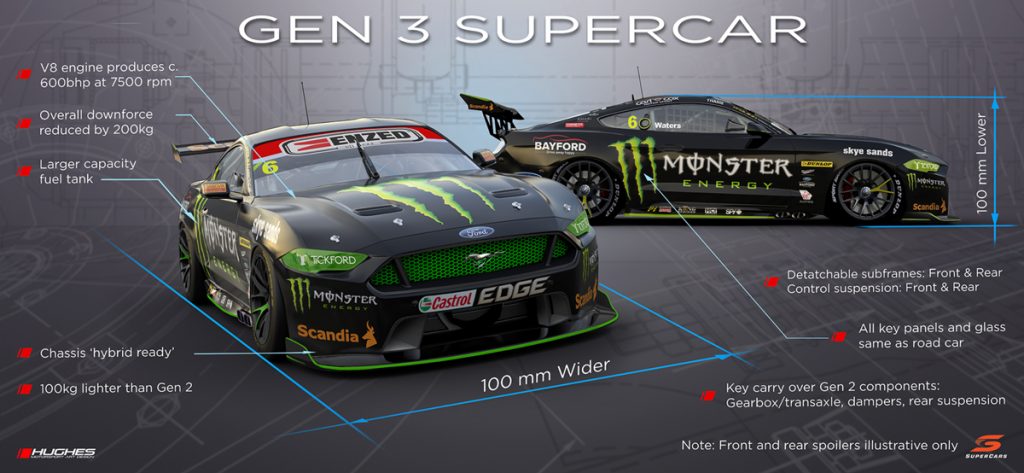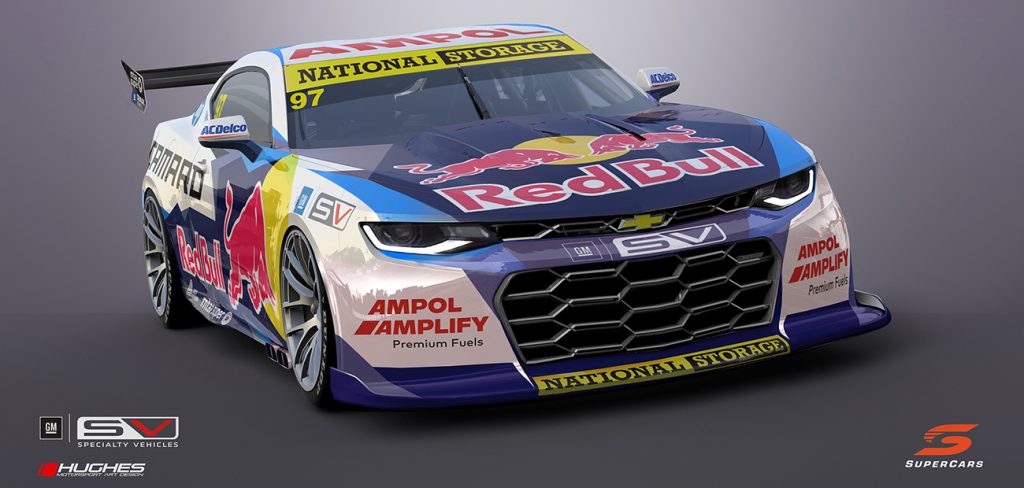General Motors has revealed that the Chevrolet Camaro ZL1 will join the Australian Supercars Championship grid in 2022, with a car built to the category’s new Gen3 rule package.
With GM electing to shut down Holden’s operations this year, the current Commodores will race on in 2021, before the Gen3 Camaros debut the following season. Current Holden factory team Triple Eight is spearheading the project, having been charged with the design of the Gen3 Camaro race car body by Supercars under the endorsement of GM.
The intellectual property for the race car will be retained by Supercars, meaning other teams will also be able to race Camaros, either by purchasing complete cars from Triple Eight or by building their own.
Category boss Sean Seamer commented, “It’s great news to have GM continuing their presence in Australasia’s leading motorsports category. The Camaro will play a key role in the development of our new generation of race cars, so when it hits the track, it’s sure to excite not only our younger fans, but importantly, all those who remember the nameplate’s rich history in the sport.”
The Roland Dane-led Triple Eight team has run Holdens in Supercars since defecting from Ford in 2010, taking over factory team status in 2017.
“It’s very pleasing to bring such an iconic car, the Chevrolet Camaro, back to Australia’s race tracks,” said Dane. “Personally, I have enjoyed a long motorsports relationship with General Motors, dating back to the 1990s in the British Touring Car Championship, so I’m happy to be able to continue that.
Gen3 rules
According to the series, increased road relevance, improved racing and reduced costs are the key pillars of the Gen3 formula. The new rules will mark an evolution from the current Gen2 cars, retaining the V8-powered, front-engine, rear-wheel-drive layout and performance balancing regulations.
The new control chassis will be smaller than the current iteration, a move the series has made in order to broaden the range of cars that can compete. Notably, the rules will require that all race cars have the same dimensions as the road cars they are based on for all key body components, such as doors, roof, windows and bonnet. These components must be interchangeable with those on the respective road car.
Rule makers are also targeting a downforce reduction of more than 50% from current levels, with a new control tire from Dunlop being developed to match the reduced aero loads.
Components to be carried over from the Gen2 cars include the transaxle gearbox, dampers and independent rear suspension. The power-to-weight ratio of the cars is expected to be unchanged, with a small reduction in power offset by 100kg less weight. Supercars says it is also aiming to reduce data acquisition and operating costs by between 30% and 40% of current levels, improving sustainability for teams.
Details of the V8 engines to be used are still to be confirmed, though Supercars says it wants to extend engine life, while also reducing fuel consumption and ensuring more engine options can be competitive. A generic, Supercars-branded motor is also under consideration in order to reduce barriers to entry for new players, while hybrid technologies could be introduced in future.
The first Gen3 prototype car is expected to start track testing in the first half of 2021, ahead of a full category-wide roll-out the following year.




